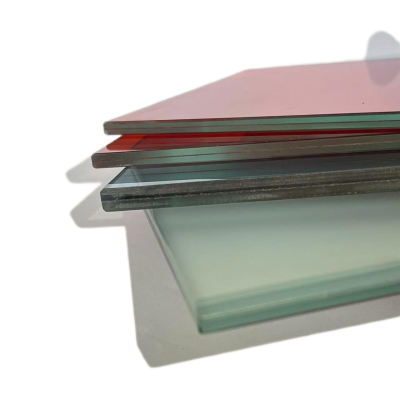“Double-Glazing”: Is It Insulated Glass or Vacuum Glass? Let’s Understand their Differences and Effect
“Double-Glazing”: Is It Insulated Glass or Vacuum Glass? Let’s Understand their Differences and Effect
Nowadays, many household windows are installed with double layered glass and the edges are sealed with black glue. This type of glass is commonly referred to as' double layered glass'. However, does the commonly used "double layered glass" refer to insulating glass or vacuum glass?
What are the differences in the effects of these two types of glass?
1. Insulated Glass (IG) - Two Main Types
a. Dry Air-Filled Insulated Glass
The first type of insulating glass is characterized by filling dry air between two layers of glass. This design can effectively prevent frosting inside the glass during cold weather, ensuring that the transparency of the glass is not affected. In addition, it can significantly improve the thermal insulation and soundproofing effects, with performance far superior to single-layer glass
b. Inert Gas-Filled Insulated Glass
Another type of insulating glass is filled with inert gas between two layers of glass. Inert gases have excellent stability and will not change due to heat or sound transfer. Therefore, this design is superior in terms of insulation and sound insulation compared to dry air, but correspondingly, its cost is slightly higher than the first type.
Steel Tempered Glass for Insulation:
Hollow glass usually adopts a double-layer tempered glass structure. This design allows the glass to break into numerous small, irregular fragments when subjected to external impact, thereby reducing the harm to surrounding personnel at the moment of breakage. A simple way to determine whether the glass has been tempered is to check if there is a "Tempered 3C mark" on one corner of the glass.
In addition, during the manufacturing process of insulating glass, aluminum strips are used to separate the two layers of glass, and butyl rubber (the same material as the tire) is used for sealing. At the same time, a desiccant will be added in the middle of the glass to ensure that the gas inside the glass remains dry at all times.. If the sealing around the insulated glass is not good, it will affect its insulation and sound insulation effect, as air and moisture may enter the interior.
2. Vacuum Glass - A Better Performance Solution
The difference between vacuum glass and insulating glass is that the middle part is completely emptied of air, achieving a high degree of vacuum. Therefore, compared with insulating glass, its insulation and sound insulation effects are more outstanding. Of course, this high-performance glass product will also bring corresponding cost increases, usually 2 to 3 times the cost of insulating glass. In addition, in order to further optimize the thermal insulation performance, at least one piece of vacuum glass will be made of low emissivity glass, thereby minimizing the heat loss through conduction, convection, and radiation.
Concerns About Pressure and Safety:
Perhaps you may be concerned whether the increase in atmospheric pressure after vacuum glass is evacuated will cause the glass to break? Indeed, this is a reasonable concern. However, in order to ensure the safety of vacuum glass, manufacturers will install countless tiny supports inside it. These supports can effectively counteract the pressure difference between the inside and outside, thereby ensuring the safety performance of vacuum glass.
3. Comparing Insulated Glass and Vacuum Glass
Aspect | Insulated Glass | Vacuum Glass |
Thermal Insulation | Effective, but not as efficient as vacuum glass. | Superior thermal insulation due to the vacuum between the glass panes. |
Soundproofing | Good soundproofing, especially with inert gases. | Excellent soundproofing due to the vacuum state. |
Cost | More affordable, widely used in residential settings. | Expensive—2 to 3 times the cost of insulated glass. |
Durability | Requires careful sealing and maintenance to ensure optimal performance. | High performance with minimal maintenance, but more delicate and costly. |
Applications | Common in residential windows, office buildings, etc. | Typically used in high-performance applications, such as energy-efficient buildings or specialized windows. |
4. Why Is Insulated Glass More Common in Homes?
Generally speaking, the most common type of glass in homes is insulated glass, which is relatively affordable in cost. However, when it comes to insulation and sound insulation effects, vacuum glass has better insulation and sound insulation performance, but the cost is much higher. It is more commonly used for professional applications, such as buildings with strict energy efficiency requirements or places that require high noise reduction.
Therefore, there is a reason why insulating glass can be widely used.
Conclusion
Insulated glass and vacuum glass both have good insulation and sound insulation effects, but there is a huge difference in cost and performance. If you need high-performance windows and are willing to pay more, choose vacuum glass. However, for most residential buildings, the insulation and noise reduction functions of insulated glass are sufficient, and it is more economical
If you are considering installing new windows for your home or building, it is important to assess your specific performance requirements and budget before making a decision. Both types of glass can improve comfort and energy efficiency, but understanding their unique advantages will help you make the right choice.
Let me know if you need any additional edits!


































































































































































































